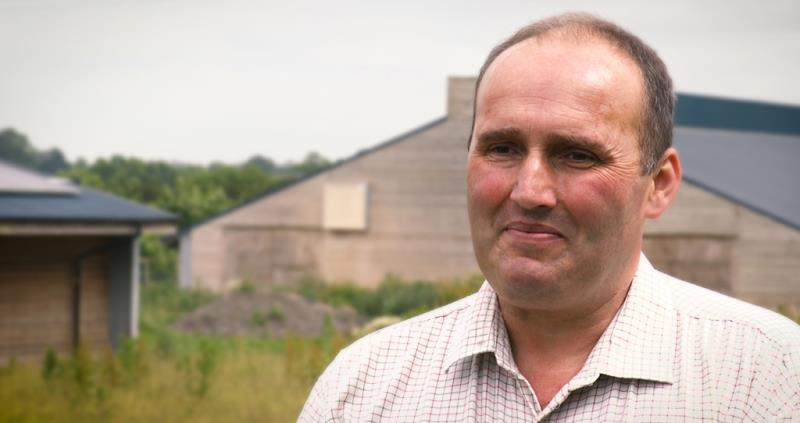Phill runs Sunrise Eggs with his brother, Ady. It's a second generation family farming business established in 1970.
The business invested in free-range in 1997 and has seen steady expansion since. Today, Sunrise Eggs packs approximately four million eggs a week. The business supplies all sectors of the market including major retailers, food service and local shops from its BRC grade AA packing centre. All retail packaging, including plastic, is made from 100% recycled material.
Phill said, “The purpose of this assessment was to try the calculators out, looking at their functionality and ease of use for poultry farmers. This trial focused on a laying hen perspective.”
- Read about NFU Poultry Board member Simon Barton's similar test from a broiler producer perspective: Carbon calculators – tested by a poultry broiler producer
Although there are 64 carbon calculators on the market, Phill tried out the three most commonly used and applicable calculators: Agrecalc, the Cool Farm Tool and the Farm Carbon Calculator.
Data sources – what information will I need?
- Total fuel and electricity use
- Number of birds
- How manure is handled
- Waste (amount recycled and amount to landfill)
- Woodland area (type and age)
- Mortality rate
- Duration of lay (days)
- Purchased bedding (type and amount)
- Water use
- Feed components
- Transport from farm to point of sale
Each of the calculators asks for data to be input in different ways and some calculators ask for more detail than others.
An important tip is to keep a close eye on the units of measurement requested. Some ask for tonnes, others use kilograms.
Try to gather the data you'll need beforehand to make the process as smooth as possible.
Farm Carbon Calculator
Developed by the Farm Carbon Cutting Toolkit organisation, the Farm Carbon Calculator is free to use with an unlimited amount of footprints available. The tool provides a carbon balance looking at emissions and sequestration.
Some questions are not worded correctly for poultry such as 'annual yield in tonnes'. This is not a familiar measurement applied in egg production – a preferred alternative would be to ask for the annual yield otherwise known as egg production in egg numbers i.e. dozens.
The figure provided for sequestration (trees on the range) was unexpectedly large and the calculator asks for 'tree crown growth'. A more user-friendly way to report this would be to state the age of the trees.
For agricultural buildings the only option is a 60ft x 30ft barn and this is not universally applicable to poultry units. It will be helpful if users can select the type of system (i.e. multi-tier or flat-deck) and the number of birds (i.e. 16,000, 32,000, 64,000) in order for the standard sizes of poultry houses to be pre-populated on the calculator. An additional option to input bespoke sized housing would also be advantageous.
The live results worked well and the final results are easy to interpret with bar charts and pie charts providing good visuals of the carbon balance.
One of the main disadvantages is that poultry feed is not adequately covered as it stands in this calculator.
Agrecalc
SAC Consulting developed this calculator and it has been endorsed by the Scottish government.
The tool takes productivity indicators into account such as mortality rate and flock cycle. Some questions could be interpreted in different ways such as 'average number of livestock over 12-month period'. It is not clear if this includes mortality. Again, this confusion is based on the vocabulary used and this could be rectified by considering the needs of all sectors equally. There was also a functionality error in the livestock weight section with auto filling boxes. Livestock weight is not as relevant for layers compared to broilers.
Overall it was felt that this tool was not as user friendly as the other tools but it covers the requirements for poultry relatively well.
To improve the existing tool, the feed section needs to be updated with measures more relevant to poultry such as average grams of feed per bird per day as well as protein and energy content of feed.
Cool Farm Tool
The Cool Farm Tool provides product footprinting only, making calculations for mixed farming enterprises difficult. It is initially free for farmers with five product footprints available before a fee is required. Organisations that use this tool to support sustainable agriculture pay to become members of the ‘Cool Farm Alliance’ which gives additional functionality.
The Cool Farm Tool was user friendly and the results were relatively easy to interpret. Inputting the data was simple with instructions taking you through the process with ease. The feed section of this calculator works well for layers.
The main downside to this tool is that sequestration is not accounted for in a livestock footprint.
Recommendations
Phill said, “None of these calculators work well for laying hen enterprises as they stand. All of them could be made to work for poultry, but I feel at present that Agrecalc probably has the most potential.”
His key feedback is:
- Assessments should be completed on a flock cycle basis as opposed to an annual basis.
- Calculators must take carbon sequestration into account.
- Feed sections must be relevant to poultry.
This trial has fed into the work of the NFU net zero steering group, consisting of a representative from every national board and forum.
The net zero steering group is drafting a list of criteria that NFU members want to see in any carbon calculator. The list is being populated by feedback following similar trials for each sector.
The NFU is working with the developers of carbon calculators to ensure that member’s voices are heard in order for carbon calculators to be as relevant and useful as possible.
